How Productboard can help your organization weather today’s storm

As the global health crisis grows, we wish you, your team, and your loved ones health and safety in this challenging time. Many of us are beginning to experience this crisis firsthand, or have experienced its immediate after-effects, like suddenly moving to full-time remote work. A cloud of uncertainty looms overhead, as customers question every expenditure and businesses look to reduce costs. There’s never been a more important time to 1. show customers you’re really listening, 2. get features right the first time, and 3. keep colleagues aligned. In all these ways, a product management system can help. It serves as a foundation for all your product processes that may be in flux.
With the latest challenges in mind, we’ve prepared the following tips to ensure you’re getting the most out of productboard. You’ll find special emphasis on features we’ve recently launched or will be finalizing soon that will prove especially valuable during this time.
Together, we’ll brave this storm. And if we’re able — forge ahead in the meantime, barely breaking our stride.
1. Show customers you’re really listening
In times of hardship, when budget-constrained customers may be at risk, there’s no choice but to double down on investing them in your solution and where it’s headed next. Give them a voice in the process and show them you’re listening to turn passive users into champions.
Invest customers in your product direction
The Portal is designed to bridge the gap between product teams and customers by sharing ideas under consideration, currently planned, and recently launched. Colleagues and customers can provide feedback on ideas to help you validate them by seeing which matter to users the most. You can start by adopting the Portal internally with colleagues, or share it only with a select set of customers. When ready, share your Portal with all customers, make it public, or even embed it within your app or website.
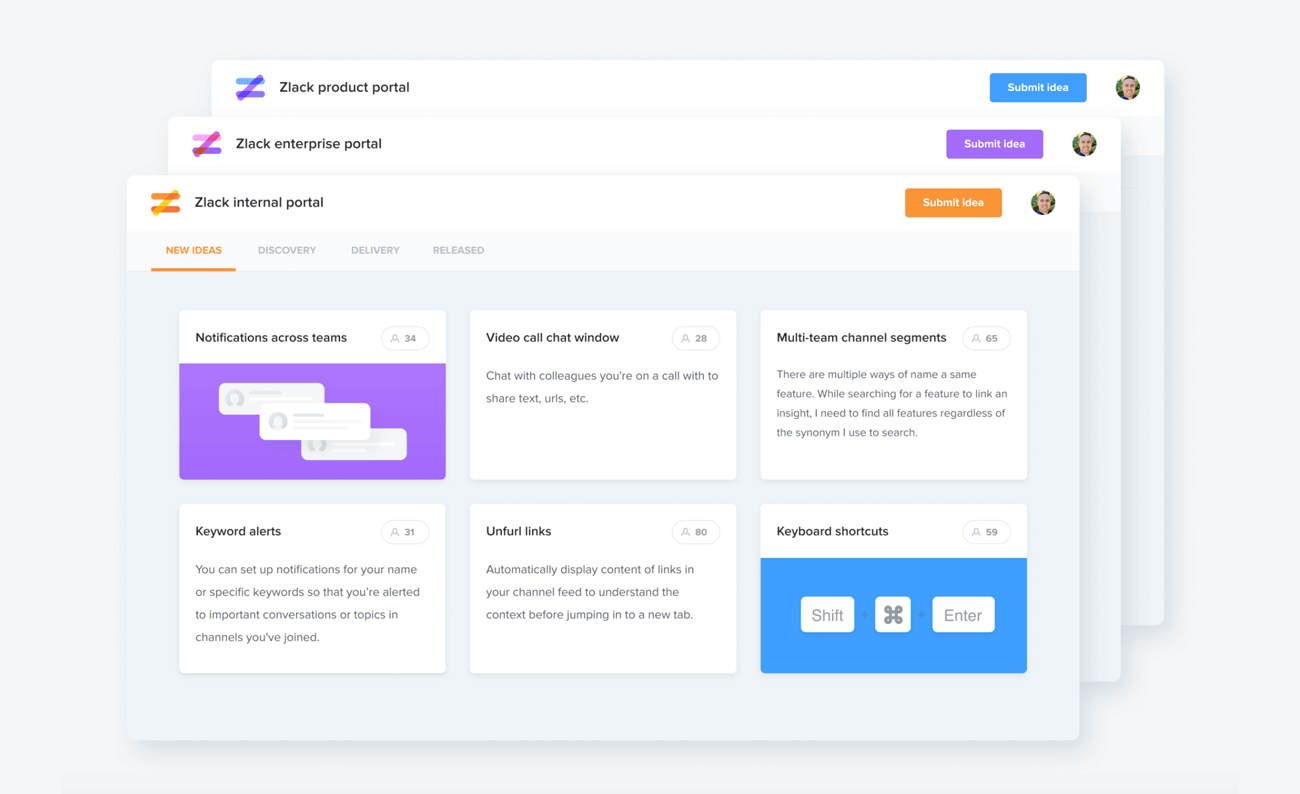
Keep customers in the loop
Now is the time to use every opportunity to delight users. Show them you’re continuing to make progress on the ideas that matter to them by posting updates to Portal cards that can also be emailed to everyone who requested the feature in the past. Notify them it’s now planned, in progress, or ready for launch. Or include a link to a survey/form to validate your ideas even further by recruiting users for feature betas or research.
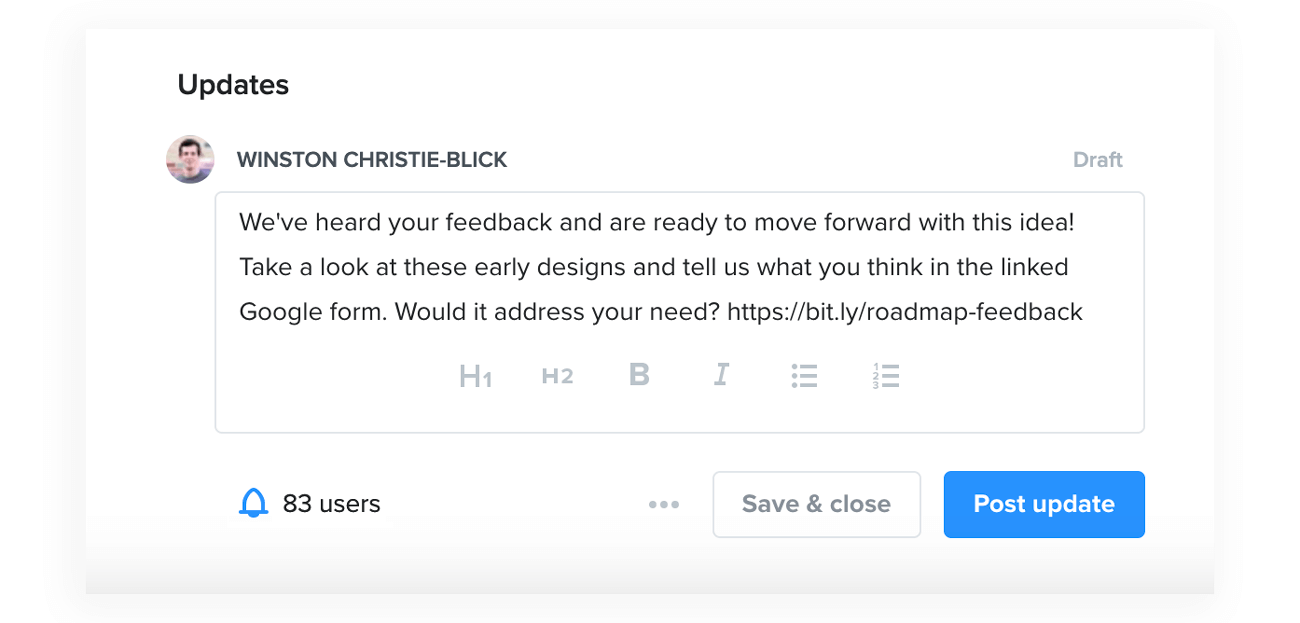
If you’re already using a Portal, try these Portal best practices to drive more user engagement and earn more valuable feedback.
2. Get features right the first time
These days there’s no time to waste shipping features users don’t really need, or losing cycles by working off of flawed assumptions. Gradually iterating toward the right solution is a price most teams can ill afford. Prevent these missteps by equipping your team with relevant user insights to support important product decisions.
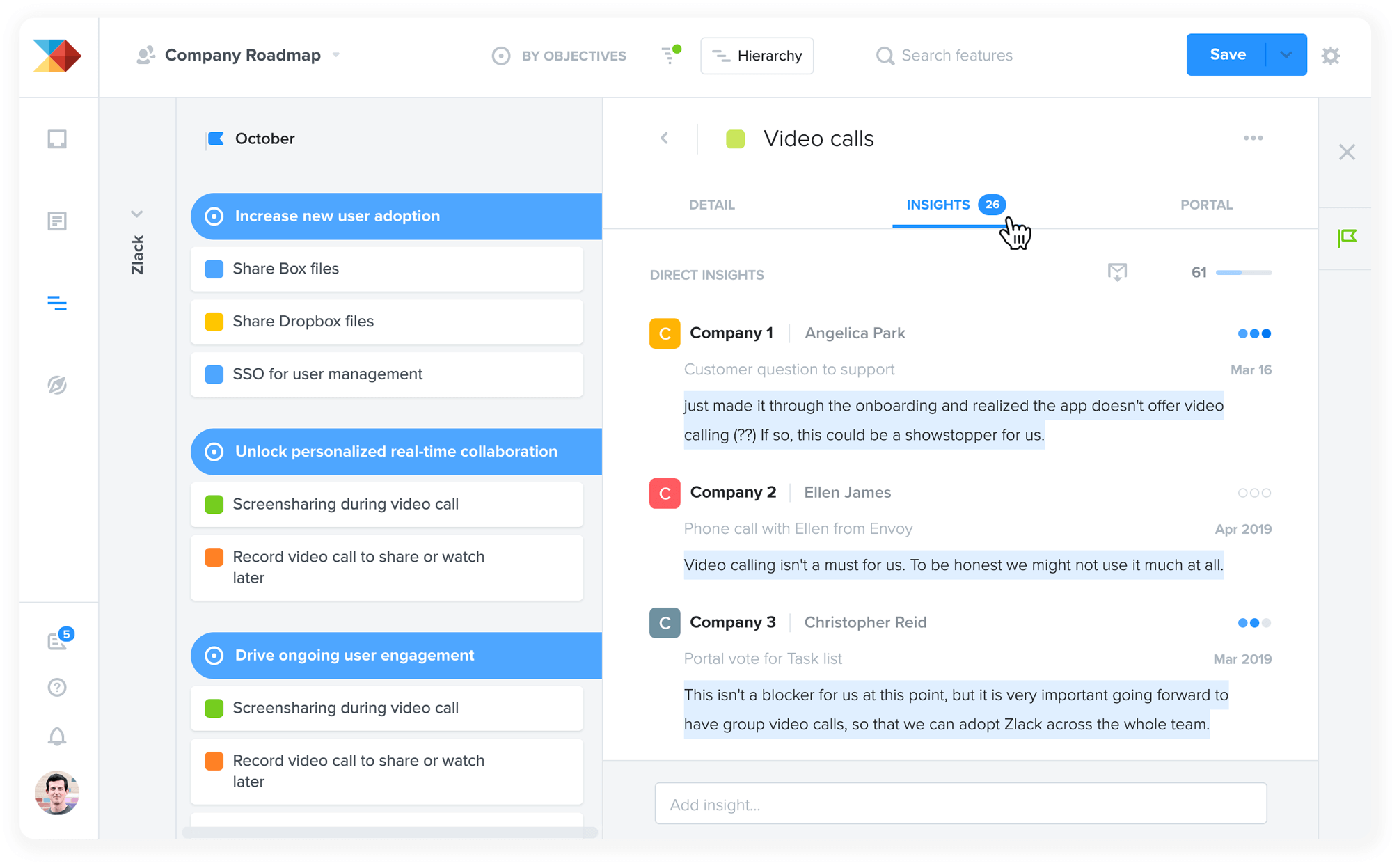
Keep your feedback pipeline intact
As teams turn to remote work, there are fewer opportunities to share product ideas or market insights in passing. (Watercooler talk may have been more valuable than we realized!) Make sure to follow up with colleagues on the frontlines — in sales, support, and customer success — to reinforce the systems you already had in place for sharing insights via email, Slack, Intercom, Zendesk, the Chrome extension, the Portal, and other sources.
Back product decisions with user insights
One of the best ways to cut down on wasted effort is by practicing continuous product discovery. It’s the process of collecting user insights continuously so they’re on hand when you’re ready to prioritize features. With insights on hand, you’ll have a big head start in uncovering the underlying user need behind feature requests, so you’re equipped to deliver the optimal solution.
Of course, time is of the essence. So use new collections on the Insights board to automatically group related feedback and get it into the hands of the right product managers. Notes will be easier to retrieve, and faster to process, and that means more actionable insights to guide prioritization.
Also be sure to routinely reevaluate the systems your team uses to efficiently process insights.

3. Keep colleagues aligned
As teams turn to remote work it’s critical to keep the extended product team and leadership in-sync on what’s planned and how timelines are being impacted by new obstacles.
Plan for different contingencies with timeline roadmaps
New timeline roadmaps, now available to try in Labs, will provide even more granularity around which objectives or releases you’re planning to deliver, and when.
Timeline roadmaps allow you to start from a blank slate and add entities to your roadmap as you go, helping you visualize various contingencies:
- Backward-plan from date-based milestones like an industry conference where you’ll be making a major product announcement.
- Consider which objectives/releases might be tackled by which teams, sequentially or simultaneously.
- Share with leadership to make the case for added team capacity.
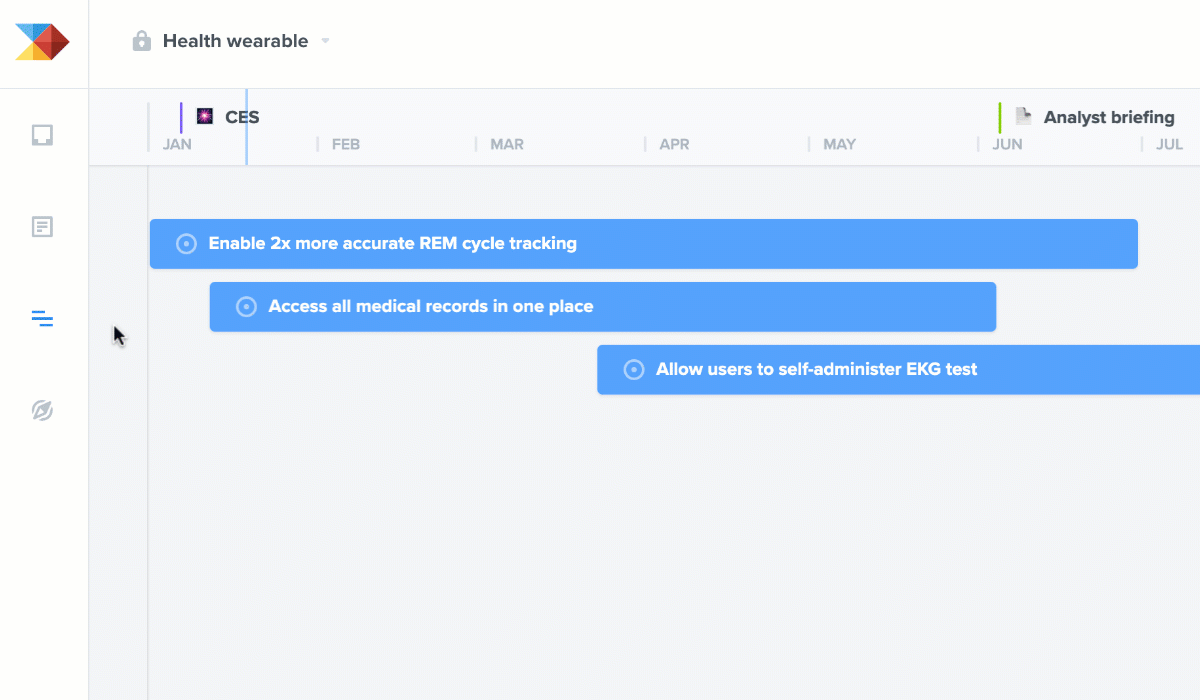
Plus, look out for the ability to define feature dependencies that will help plan work across many product teams! Coming soon.
See who’s working on what
No matter which type of roadmap you’re using, if you’re organizing features by product objective, you can now visually indicate which teams own them. It’s a small step to significantly boost accountability and ownership.
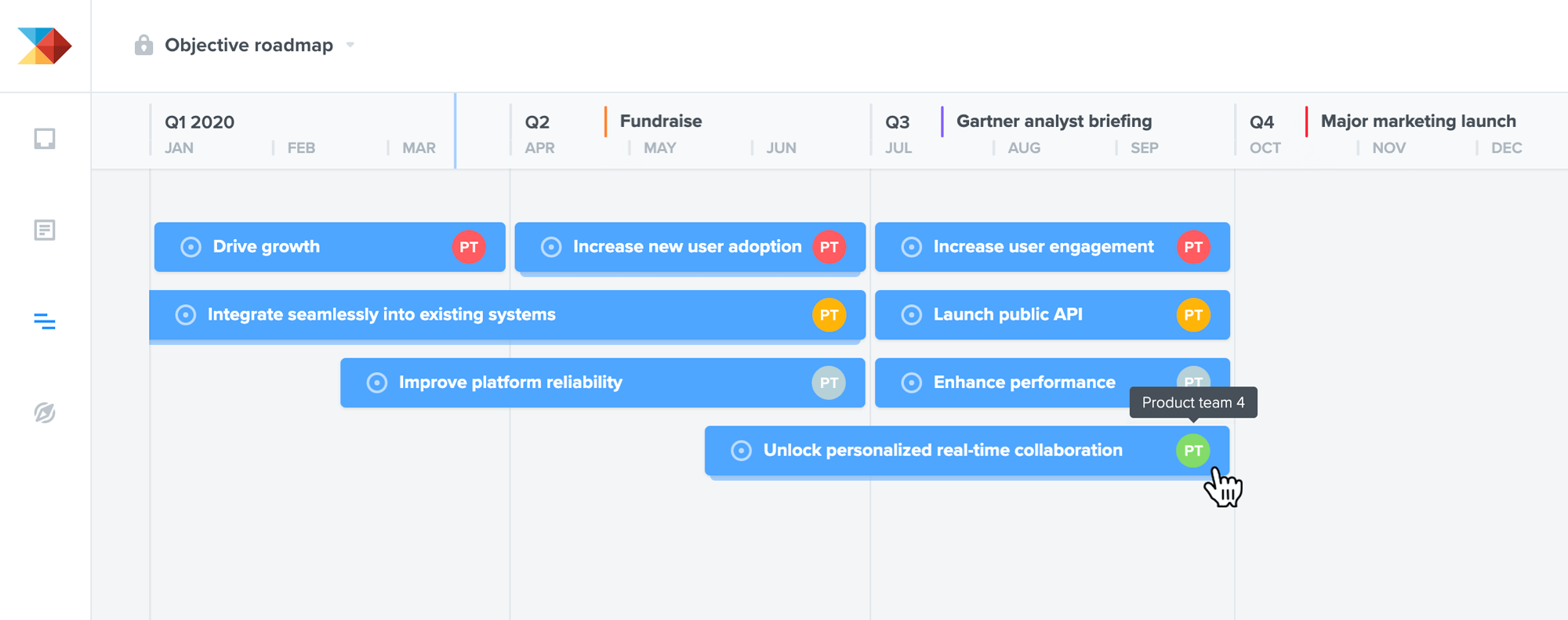
You can also define teams like sales, marketing, or leadership in your workspace to @mention many colleagues at once, or to share saved views of your Features board or Roadmap with a certain set of users.
Stay in control
Keep an eye out for new types of notifications, in addition to those already available, that will let you and your colleagues know when there’s an important change to a feature they own or follow. For product managers, it’s yet another way to stay in control of all that’s happening with your products.
A word on making products amid uncertainty
Agile teams are well-practiced in operating in environments of uncertainty where they must take what comes and adapt accordingly. This approach is as much a mindset as a set of processes, and it can be put to use in times of adversity. As the world is thrown into flux and many teams become distributed overnight, we hope you’ll see a dedicated product system as a foundation for your product processes new and old, and a source of stability and continuity in turbulent times.
Keep an eye out for new capabilities in the weeks ahead. In the meantime, if there’s any way we can better support your team, please let us know.
If you’re looking to connect with like-minded product managers who may be facing similar challenges, find us on productboard’s customer Slack community.
Rooting for you,
Winston (& team productboard)





